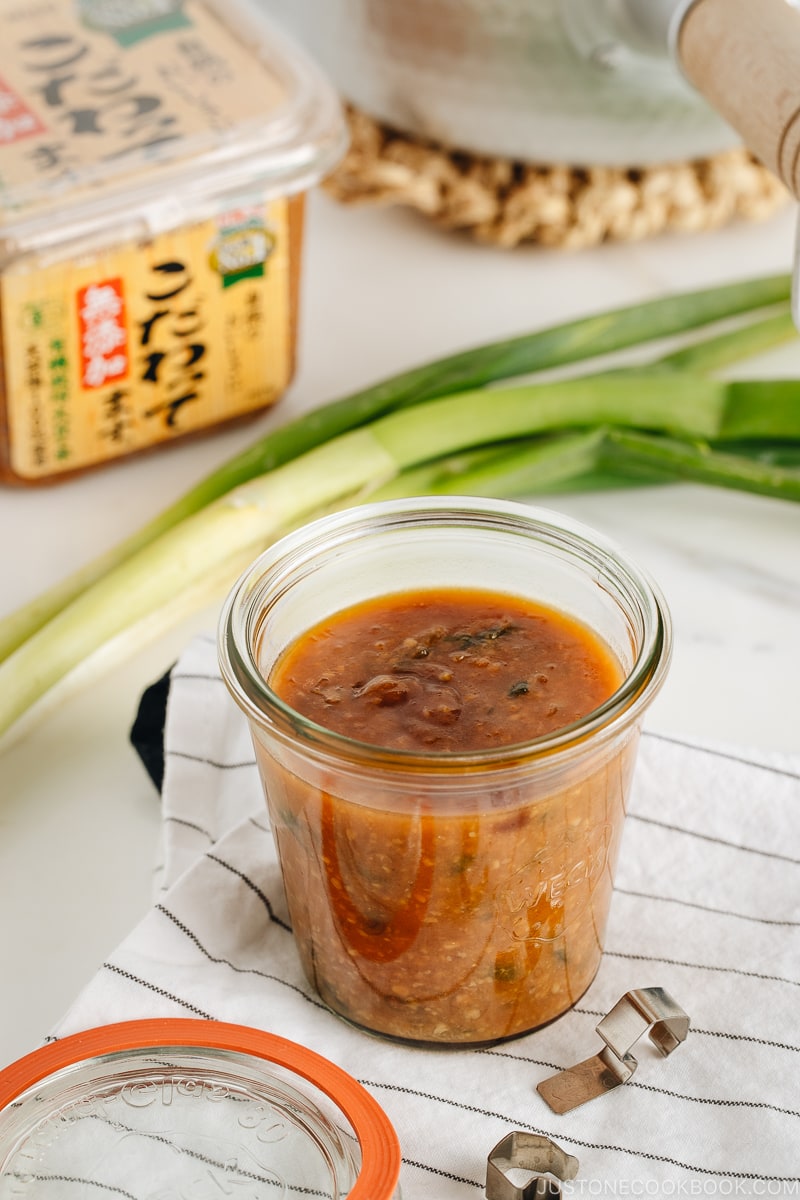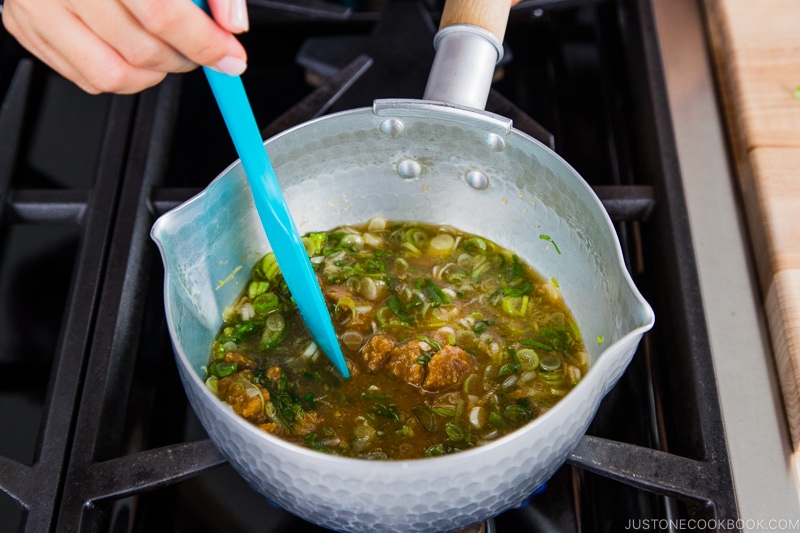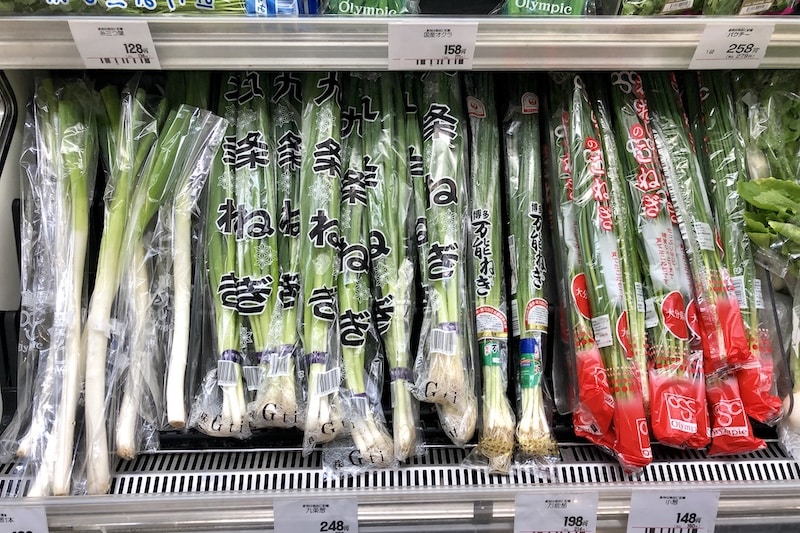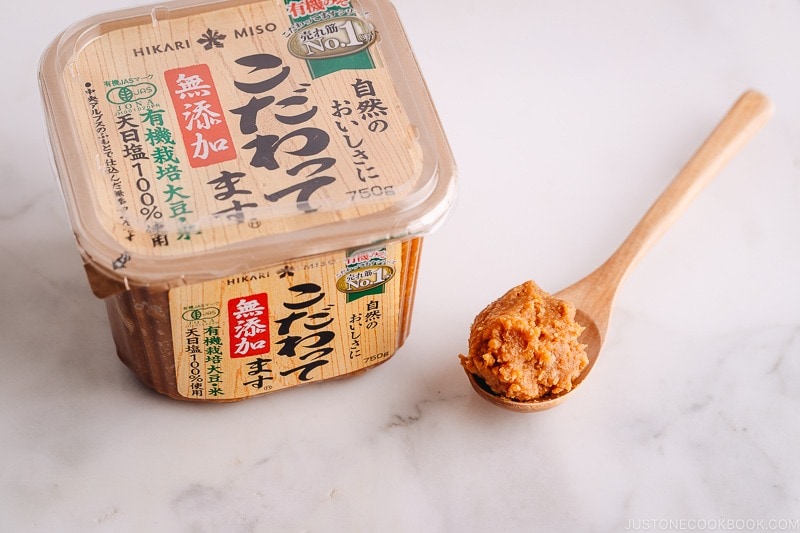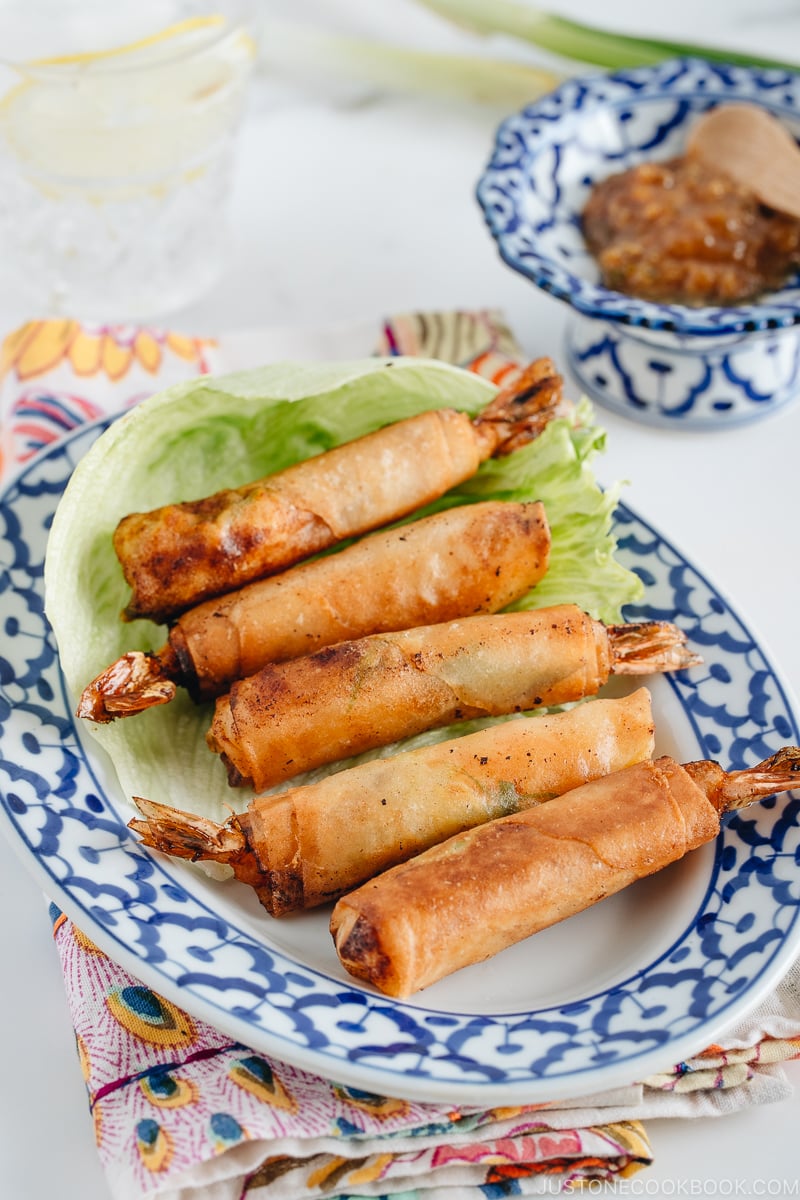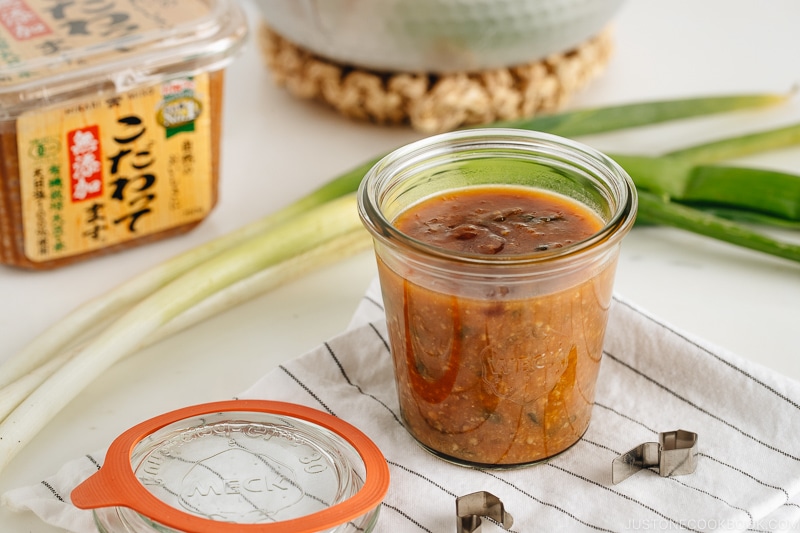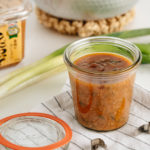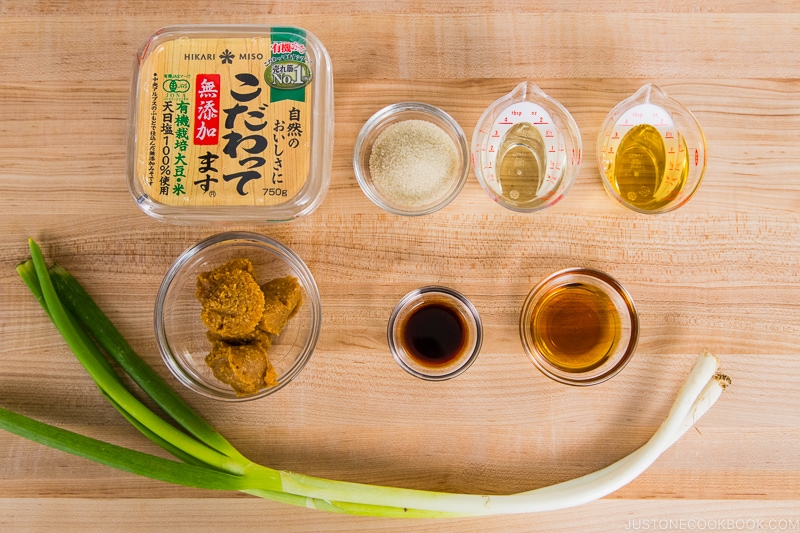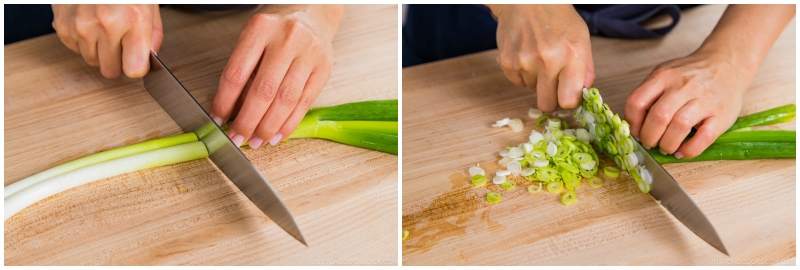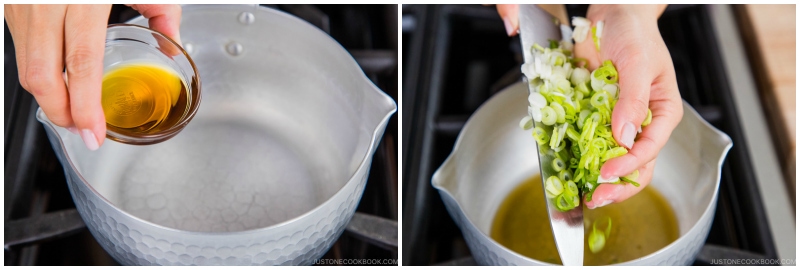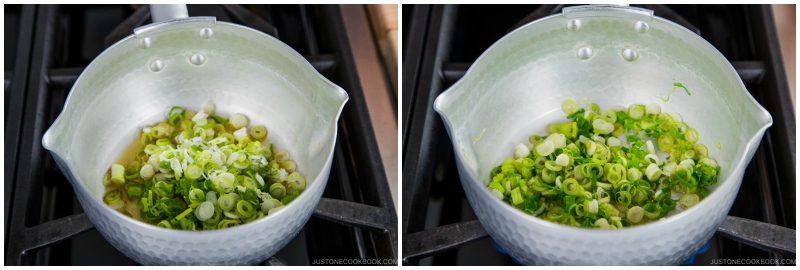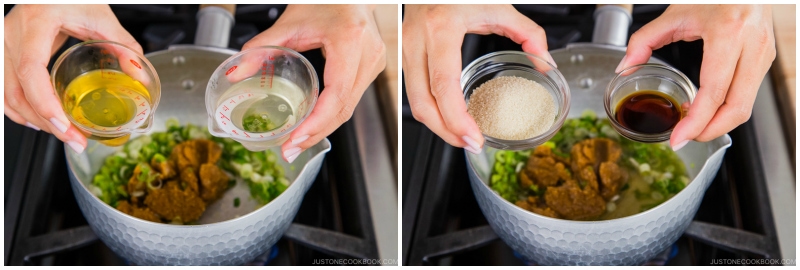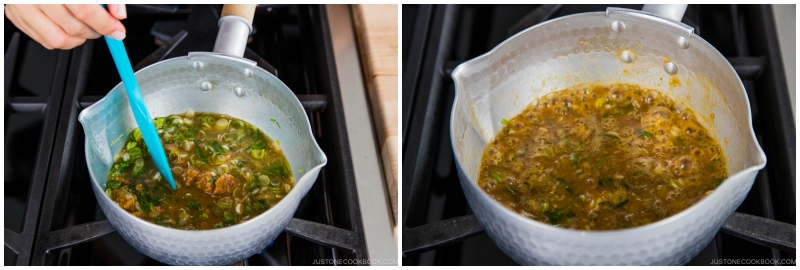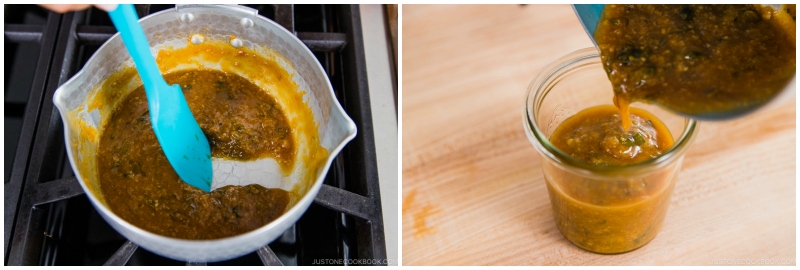Whenever I set out to do my meal prep for the week, I try to make one or two homemade sauces and dressings to keep around in the refrigerator. They are so handy for everyday and emergency meals! And this Leek and Miso Sauce recipe called Negi Miso (ねぎ味噌) is one of my favorite ones to make. I use the sauce as a marinade, dipping sauce, seasoning, or anything that is in need of a flavor boost. With only a few ingredients, you could easily it together in a flash and store for later use.
What is Negi Miso (Leek & Miso Sauce)?
Negi miso (ねぎ味噌) is a miso-based sweet and savory sauce. The main ingredients are miso paste and long green onions called negi in Japanese. It’s an all-purpose sauce that you can use in many ways, from stir-fried seasoning to vegetable dip and from brushing on grilled onigiri or tofu to marinating meats. It’s versatile in the same way as pesto sauce in Western cuisine that you would use for a sandwich, noodles, or chicken. With a bright and herby flavor, negi miso is just as flexible as beloved pesto!
What is Negi?
The key ingredient that characterizes the sauce is negi (ねぎ, ネギ, 葱) or long green onions. They belong to the same allium species as scallions (or green onions) but are longer and thicker in size and do not form a bulb at the bottom. It’s somewhere in between leeks and scallions in thickness, texture, and taste. You may also see them called naga negi or Tokyo negi in the market. If you can’t find negi in a Japanese or Korean grocery store, you can definitely use scallions/green onions or leeks or both (for texture and flavor).
Different Varieties of Negi
There are different types of negi in Japan depending on the region. Some negi are more pungent and slightly bitter than others. You can soak them in cold water to mellow the flavor, if needed.
Naga negi (長ねぎ) or shiro negi (白ねぎ) from Kanto region Kujo negi (九条ねぎ) from Kyoto Hakata Banno negi (博多万能ねぎ) from Kyushu region Asatsuki (あさつき) Wakegi (わけぎ) from western Japan
Ingredients for Negi Miso
Tokyo negi (naga negi; long green onion) – read more below; you can substitute scallions/green onions, or a combo of leeks for texture and green onions for flavor toasted sesame oil miso sugar mirin sake soy sauce
How To Make Negi Miso
Transfer the sauce to a sterilized jar and keep this sauce for up to 1 week in the fridge and 2 months in the freezer.
Miso – Japanese Fermented Soybean Paste
Miso (味噌) is a soybean paste that’s an essential condiment in Japanese cooking. In this recipe, there is no good substitute for miso. There are many different types of miso and you can read more on my ‘all about miso’ pantry page. Which miso is the best? Today, I used a slow-aged red koji miso called “Kodawattemasu,” and it’s the #1 selling miso from Hikari Miso®. This miso has a rich and mature flavor with the full-bodied umami of soybeans and the sweetness of rice. It is free of additives and preservatives. Kodawattemasu (こだわってます) in Japanese means “I’m particular (about the quality of miso and the miso-making process).” It may be hard to memorize, so just remember the green label with No.1 on the package! Where you can buy Kodawattemasu by Hikari Miso®
Japanese grocery stores like Nijiya, Mitsuwa, and Marukai Asian grocery stores including Chinese/Korean grocery stores
How To Use Negi Miso (Leek & Miso Sauce)
This sauce is an all-around sauce in my house. With a complexly sweet and salty flavor, it can really jazz up any bland dish, especially if you do a lot of Japanese or Asian cooking at home. Here are just some delicious examples:
Use as a stir-fry sauce Add to rice balls as a filling or brush on Yaki Onigiri Apply to tofu, eggplant, daikon, and konnyaku (see my Dengaku recipe) Use as a dip for veggie sticks like cucumbers, carrots, and daikon Top steamed rice with a teaspoon of sauce Marinate meat and fish Use as a seasoning for Shrimp Egg Rolls
I hope you enjoy it! Sign up for the free newsletter delivered to your inbox and stay in touch with me on Facebook, Pinterest, YouTube, and Instagram for all the latest updates.
